When people discuss why they appreciate their financial advisors, they typically specify helpful actions the advisors took, such as allocating their assets appropriately or guiding them in saving for retirement.

What people don’t tend to discuss, though, is the value you can derive when working with a financial advisor or team because they are responsible for something that didn’t happen — the taxes you didn’t pay, the market gain you didn’t miss or the market loss you didn’t sustain.
There is a difference between hiring someone to manage and invest your money and hiring someone to do holistic planning. If you choose to work with an expert for planning, there are differences among them, just as if you were hiring a surgeon.
To make the right choice for your situation, answer some questions: Are you hiring a single person or a full team? What is the scope of their client experience? Does the way they are compensated align with your interests or something else? Are these individuals fiduciaries, meaning they are obligated to work in your best interest?
You Can DIY, But Should You?
To illustrate the vast differences among advisors and their approaches to working with clients, let’s consider two (hypothetical) people — Joe and Frank.
Joe loves the do-it-yourself (DIY) approach. He found a commission-free trading platform online and, over a year, figured that he saved more than $5,000 in expenses and fees. He spent more than 100 hours looking for the best deals and managing his own wealth. In the end, his $500,000 portfolio made just over $20,000, and he was happy to pay tax on it. He then tried to time the markets after watching countless hours of news and researching on the internet. He lost a good portion of what he made.
In contrast, Joe’s Friend, Frank. paid a team of advisors $6,000 in advisory fees. While his expert team tailored a plan for him, Frank spent his time enjoying his family, a vacation and fishing, his favorite pastime. Frank ended up making $50,000 — after paying the advisors — and paid no income tax because of the planning his advisors did with his CPA, in this hypothetical example.
Focus on Your Net Return — On Assets and Time
At the end of the day, the most important outcome is your net return — both on your assets and your time. Yes, many people are capable of managing their own wealth — but they have better uses for their time.
While many firms, and financial planners, focus on investments and numbers, we concentrate on what’s most important to you personally. After our team learns what’s important to you — your vision — we will develop, monitor, and update a plan for you to achieve that vision. Your portfolio is just means to the end.
Volatility in the markets continues to increase. Meanwhile, the world is becoming more complex, and there is more information than ever to sort through. We are here to sift through it all and find what’s relevant to you, constantly monitor your progress, take advantage of opportunities, and miss potential pitfalls. We will guide you to the positive outcomes and away from the negative ones.
At the end of the day there are many things an advisor does to add value that you see. Sometimes, the most important are the things we can’t see because they didn’t happen.
Please reach out any time if we can answer questions or otherwise be of service. We are here for you. Your vision is our priority.
________
Randy Carver, CRPC®, CDFA®, is the president and founder of Carver Financial Services, Inc., and is also a registered principal with Raymond James Financial Services, Inc. Randy has more than 32 years of experience in the financial services business. Carver Financial Services, Inc. was established in 1990 and is one of the largest independent financial services offices in the country, managing $2.2 billion in assets for clients globally, as of December 2021. Randy and his team work with individuals who are in financial transition as a result of divorce, retirement or the sale of a business. You may reach Randy at randy.carver@raymondjames.com.
The information contained in this post does not purport to be a complete description of the securities, markets or developments referred to in this material. The information has been obtained from sources considered to be reliable, but we do not guarantee that the foregoing material is accurate or complete. Any information is not a complete summary or statement of all available data necessary for making an investment decision and does not constitute a recommendation. Any opinions are those of Randy Carver and not necessarily those of RJFS or Raymond James. Expressions of opinion are as of this date and are subject to change without notice.
Returns are based on the S&P 500 Total Return Index, an unmanaged, capitalization-weighted index that measures the performance of 500 large capitalization domestic stocks representing all major industries. Indices do not include fees or operating expenses and are not available for actual investment. The hypothetical performance calculations are shown for illustrative purposes only and are not meant to be representative of actual results while investing over the time periods shown. The hypothetical performance calculations are shown gross of fees. If fees were included, returns would be lower. Hypothetical performance returns reflect the reinvestment of all dividends. The hypothetical performance results have certain inherent limitations. Unlike an actual performance record, they do not reflect actual trading, liquidity constraints, fees and other costs.
Also, because the trades have not actually been executed, the results may have under- or overcompensated for the impact of certain market factors such as lack of liquidity. Simulated trading programs in general are also subject to the fact that they are designed with the benefit of hindsight. Returns will fluctuate and an investment upon redemption may be worth more or less than its original value. Past performance is not indicative of future returns. An individual cannot invest directly in an index.

 Market and Economy Update
Market and Economy Update











